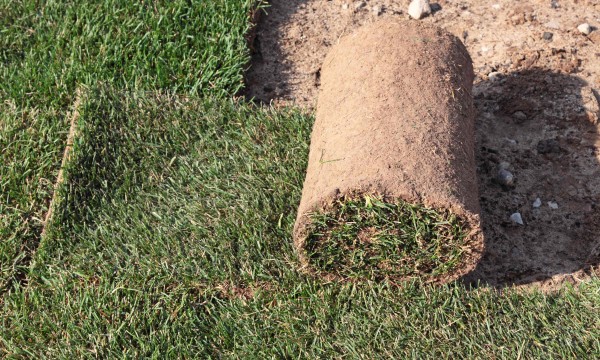Ready to plant your garden and grass but not sure where to start? Here are some tips to help you create the perfect landscape.
- Browse Categories
- All Tips
-
Home & Garden
- All
- Appliances
- Bathroom
- Cleaning
- Crafts
- Decorating
- Electrical
- Flooring
- Furniture
- Garage Door
- Gardening
- Green Living
- Heating
- Home Alarm Systems
- Home Maintenance
- Home Remedies
- Home Security
- Home Staging
- House Sitting
- Junk Removal
- Kitchen
- Lawn Care
- Lock Systems
- Moving
- Outdoor Living
- Pest Control
- Plumbing
- Renovation
- Roofing
- Snow Removal
- Storage
- Tools
- Tree Service
- Health
- Family
- Travel
- Auto
- More Tips
Your account is now active!

How to plant your garden and grass
June 19, 2015

Make a plan
- Before you get to planting your garden, you'll want to have a plan.
- Choose plants and grasses based on the climate in your location, and how much work you are willing to put into maintaining them.
- Decide where you'll plant what you need to buy in advance, so you don't wind up buying more than you can plant.
Picking and placing plants
- Select drought-tolerant, native plants suited to your local growing conditions. Using a plant suited to the growing conditions means little to no fertilizer and pesticides are needed. Also observe which of these plants better survive your annual average rainfall. Search online for plants native to your area.
- Create windbreaks — two or three rows, if possible — with drought-tolerant trees and shrubs. Less wind means less water evaporation. A windbreak can affect an area 2 to 10 times its height! (See below for a list of heat-tolerant trees and shrubs.)
- Provide shade for plants by growing drought-tolerant trees and shrubs or erecting pergolas and trellises — then adding vines and climbing flowers. Even a tiny bit of daily shade helps reduce moisture loss.
- Protect heat-sensitive plants by locating them in areas that receive only cooler morning sun (the east side of a home).
- Plant spring-flowering bulbs, which bloom before the hottest weather arrives.
- Consider planting plants that beat the heat, and won't wither in warmer weather.
Plants that survive the summer heat best
- Heat-tolerant trees
- Heat-tolerant shrubs
- Acacia
- Barberry
- Buckeye
- Beauty bush
- Catalpa
- Blue Mist spirea
- Cedar
- Broom
- Crape myrtle
- Butterfly bush
- Desert willow
- Cassia
- Eucalyptus
- Cotoneaster
- Golden-rain tree
- Germander
- Hackberry
- Heavenly bamboo
- Juniper
- Kentucky coffee-tree
- Potentilla
- Mescal bean
- Sumac
- Oak
- Rock rose
- Pine
- Rose
- Poplar
- Rosemary
- Silver linden
- Snowberry
- Wafer ash
- Vitex (or chaste tree)
Planning grass for your yard
- Convert lawns to perennial ground covers, which usually consume less water and require less maintenance than lawns.
- Grow grass where it is functional, like play areas. Use ground covers elsewhere, such as slopes that are hard to mow or shady areas where sun-loving grass struggles.
- Plant grasses suitable for your climate in order to minimize watering needs. In northern areas you might do well with fine fescues or slow-growing drought-tolerant buffalo grass, for instance.
- Again, look online or speak to someone at your local garden centre to find out what is native to your area.
National advertising powered by Mediative.com. Yellow PagesTM, Walking Fingers & DesignTM, YP.caTM, Find. & DesignTM, YellowPages.caTM, Canada411TM and YP ShopwiseTM are trademarks of Yellow Pages Digital & Media Solutions Limited in Canada. All other trademarks are the property of their respective owners. Copyright © 2018 Yellow Pages Digital & Media Solutions Limited. All Rights Reserved.
More Tips
The material on this website is provided for entertainment, informational and educational purposes only and should never act as a substitute to the advice of an applicable professional. Use of this website is subject to our terms of use and privacy policy.






